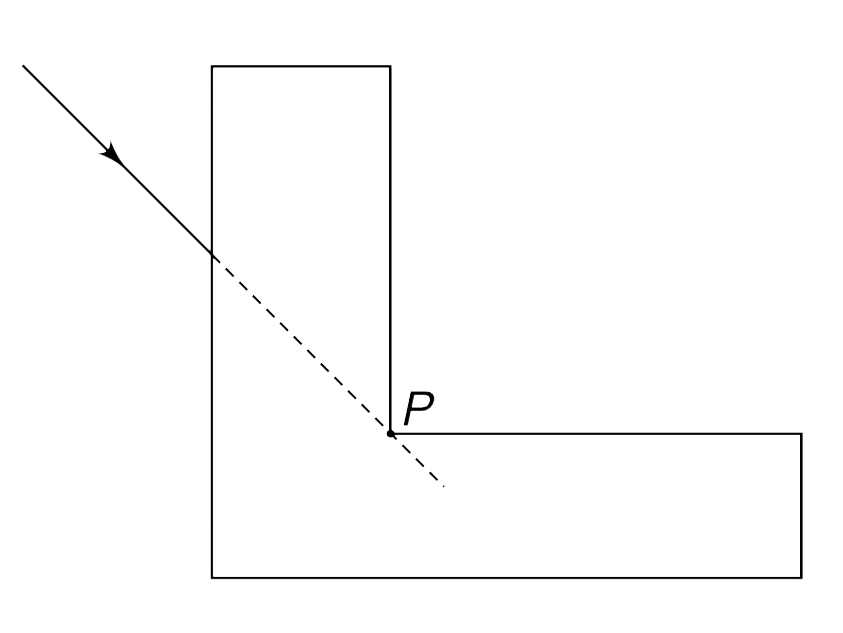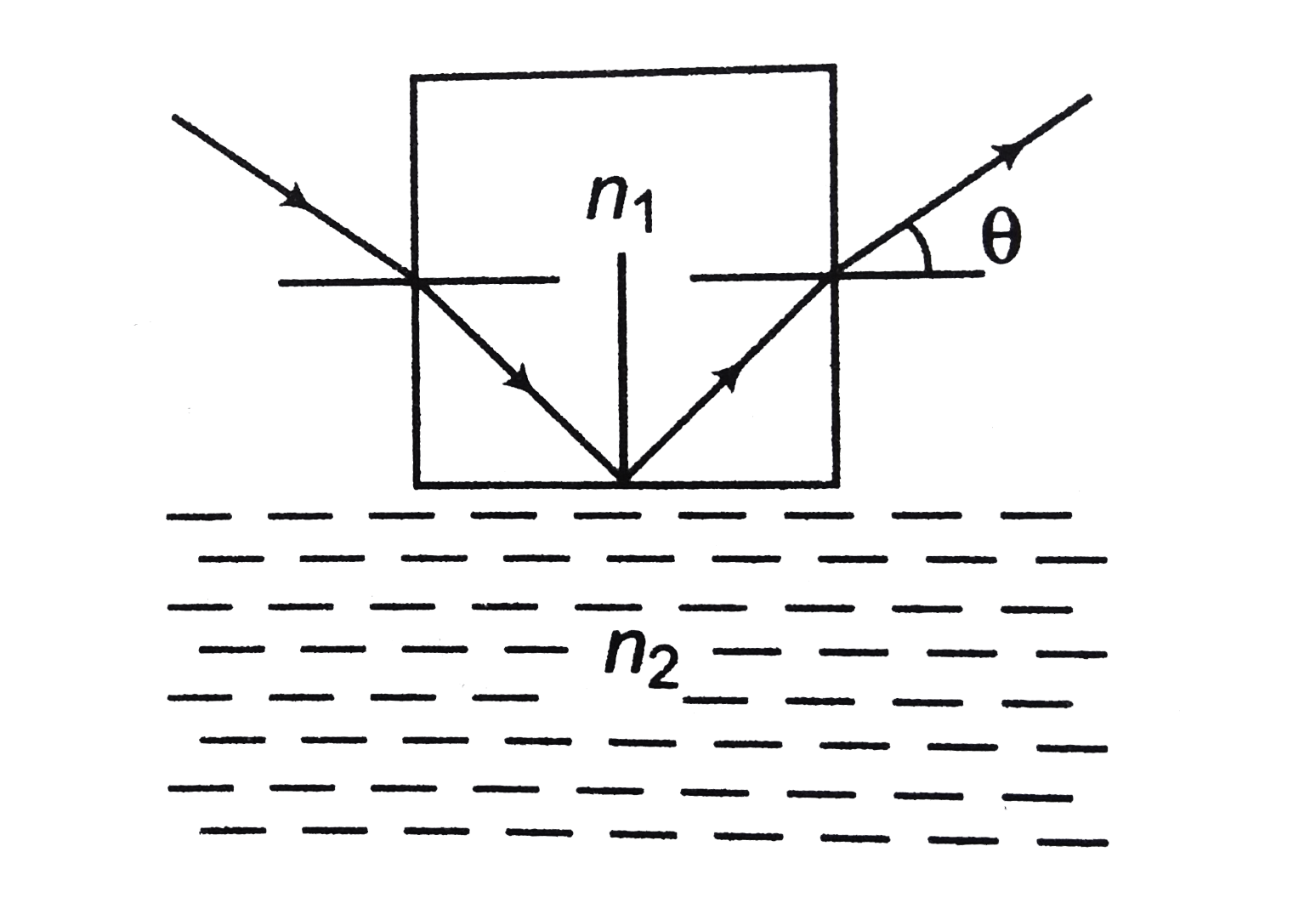A narrow beam of light enters a hemispherical block of glass through the point B to strike at the centre (C) of the block. The ray then emerges out of the block along CD. Why does the beam not suffer refractio when it enters the block at point B, yet it gets refracted at the point C?

The beam of light does not suffer refraction at the point B because it strikes the block at right angles at this point. At point C, the beam travels from glass to air and is incident at an angle less than and so gets refracted.
Similar Questions
What is the angle of incidence if a ray of light is not deviated when it enters a block of glass ?
View SolutionThe diagram given alongside shows a ray of light entering a rectangular block of glass.
a) Copy the diagram and draw the normal at the point of entry.
b) Draw the approximate path of the ray of light through the glass block and out of the other side.
 View Solution
View SolutionDraw and complete the following diagrams to show what happens to the beams of light as they enter the glass block and then leave it:
 View Solution
View SolutionA 0.500kg block is attached to a spring with length 0.60m and force constant k=40.0N/m. The mass of the spring is negligible. You pull the block to the right along the surface with a constant horizontal force F=20.0N. (a) What is the block's speed when the block reaches point B,which is 0.25m to the right of right of point A? (b) What the block reaches point B, you let go off the block. In the subsequent motion, how close does the block get to the wall where the lift end of the spring is attached? Neglect size of block and friction.
 .View Solution
.View SolutionA 0.500kg block is attached to a spring with length 0.60m and force constant k=40.0N/m. The mass of the spring is negligible. You pull the block to the right along the surgace with a constant horizontal force F=20.0N. (a) What is the block's speed when the block reaches point B,which is 0.25m to the right of right of point A? (b) What the block reaches point B, you let go off the block. In the subsequent motion, how close dies the block get to the wall where the lift end of the spring is attached? Neglect size of block and friction.
 .View Solution
.View SolutionA block of mass M is pulled along a horizontal frictionless surface by a rope of mass m as shown in A horizontal force F is applied to one end of the rope. Find
(a) the acceleration of the rope and block
(b) the force that the rope exerts on the block
(c) the tension in the rope at its mid point
 View Solution
View SolutionA block of mass M is pulled along a horizontal frictionless surface by a rope of mass m as shown in A horizontal force F is applied to one end of the rope. Find
(a) the acceleration of the rope and block
(b) the force that the rope exerts on the block
(c) the tension in the rope at its mid point
 View Solution
View SolutionHow is the refraction of light ray from a plane mirror different from the refraction of light ray as it enters a block of glass?
View SolutionA glass block of refractive index μ=1.5 has an L cross section with both arms identical. A light ray enters the block from left at an angle of incidence of 45°, as shown in the figure. If the block was absent the ray would pass through the point P. Calculate the angle at which the ray will emerge from the bottom face after refraction through the block.
 View Solution
View SolutionA cubical block of glass of refractive index n1 is in contact with the surface of water of refractive index n2. A beam of light is incident on vertical face of the block. After refraction a total internal reflection at the base and refraction at the opposite face take place. The ray emerges at angle θ as shown. The value of θ is given by
 View Solution
View Solution

